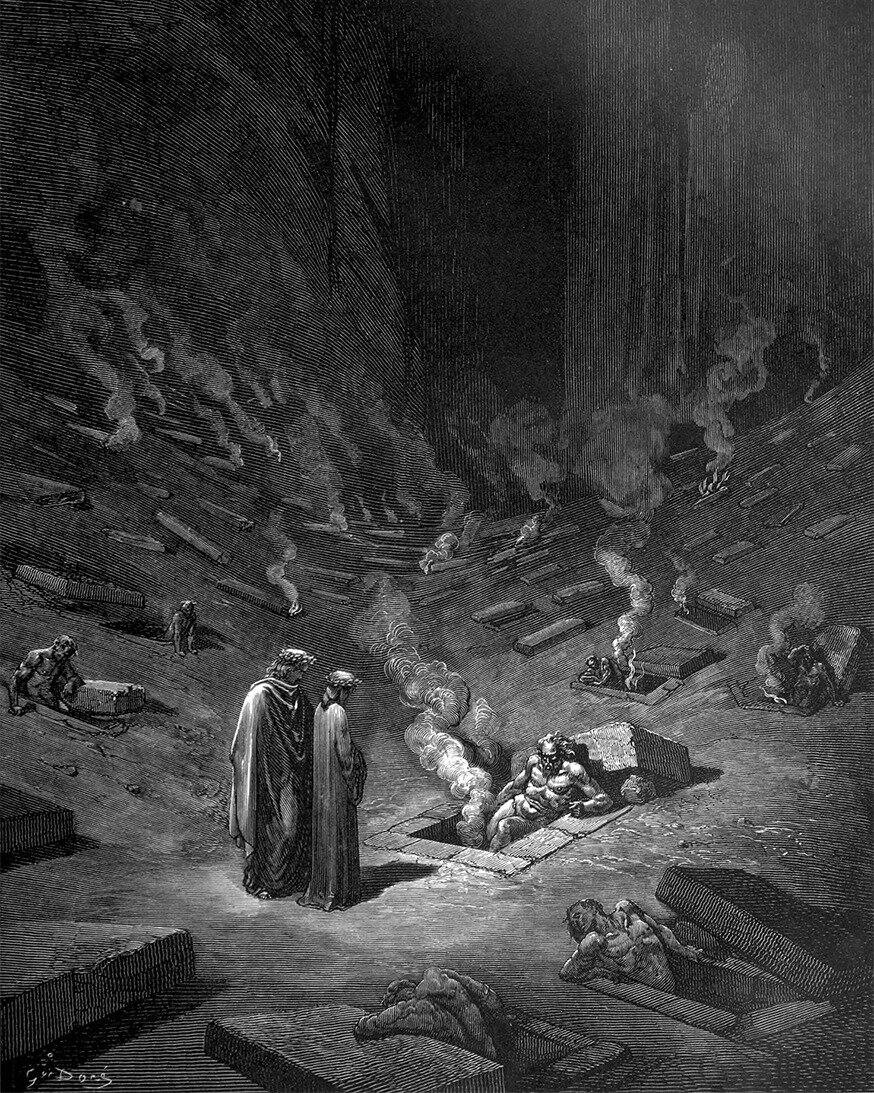Labyrinth and katabasis
Mythological references abound in Sixth Pantheon. Like Orpheus' catabasis *, going down the stairs one begins an initiatory journey. The underground organization of the necropolis invites a physical and spiritual descent towards the Underworld, kingdom of Death. Below, the journey continues within a labyrinthine world made of galleries of funerary niches.
*According to ancient Greek mythology, a catabasis is the voluntary descent made by a human being into the realm of the dead.




Giovanni Battista Piranesi, Prisiones imaginarias (1745-1760) - Gustave Doré, Dante Alighieri, Inferno Canto III : Llegada de Caronte (1861)
Gustave Doré, Dante Alighieri , Inferno Canto X (1861) - Gustave Doré, Dante Alighieri, Inferno Canto VIII : Styx Phlégyas (1861)
Ciudad de los Inmortales
“More than any other feature of that incredible monument, I was arrested by the great antiquity of its construction. I felt that it had existed before humankind, before the world itself.
Its patent antiquity (though somehow terrible to the eyes) seemed to accord with the labor of immortal artificers. Cautiously at first, with indifference as time went on, desperately toward the end, I wandered the staircases and inlaid floors of that labyrinthine palace. (I discovered afterward that the width and height of the treads on the staircases were not constant; it was this that explained the extraordinary weariness I felt.) This palace is the work of the gods, was my first thought. I explored the uninhabited spaces, and I corrected myself: The gods that built this place have died. Then I reflected upon its peculiarities, and told myself: The gods that built this place were mad. I said this, I know, in a tone of incomprehensible reproof that verged upon remorse — with more intellectual horror than sensory fear.
The impression of great antiquity was joined by others: the impression of endlessness, the sensation of oppressiveness and horror, the sensation of complex irrationality. I had made my way through a dark maze, but it was the bright City of the Immortals that terrified and repelled me. A maze is a house built purposely to confuse men; its architecture, prodigal in symmetries, is made to serve that purpose.“
The Immortal published in the El Aleph by Jorge Luis Borges, 1949.